SUCCESS STORIES FOR SUSTAINABILITY…
By Eric Schneider and Payal Bhatnagar for Youth-Leader Magazine
The world is in crisis. Global issues such as social and environmental challenges seem to be hovering upon us day after day. But this emergency call is also opening an opportunity to think and act towards the increasing social challenges and the imperilled environment. An innovative approach has been taken across the globe to take responsibility and charge of improving the situation. “Tipping Points” are being identified and applied to several situations where the ecosystems and social conditions are moving towards destruction and disappearance.
Problems can be complex. Where to start to evoke change?
In most cases, investment is made at the wrong spot in a web of interrelating factors or elements.
ETPs show the 1 element
that needs to get changed, so that the entire web of problems flips back. And they show what elements they impact at 1st level and how these lead to effects at 2nd and even 3rd level.
This understanding of valuable ripple effects
raises confidence, will and trust by decision-makers and citizens to make the investment, to take the step, to take the risk seize the opportunity.
THIS CHANGES EVERYTHING.
More than 100 ETPs are well documented.
And it’s fit for use in education.
Yes! So, get a cup of tea and learn magic
We begin with a practical example.
The case: Indian cotton farmers had believed industry advertizing that (GMO seeds and) (expensive) poison use would kill insects and create higher yields and income. Tens of thousands of small farmers invested in buying poisons … taking small credits (from loan sharks, that’s what’s available in rural India). Farmers used poisons without proper protection, got sick, hospital costs exploded … and then the crops failed! Farmers fell into debt and out of shame ten thousands committed suicide, leaving the women and children behind who lost their homes and ended up as beggars on the streets. Thank you, Euro-American industries and “Green Revolution”!
While dirty industries keep telling their advertizing lies, a tiny tweak switch the VICIOUS CYCLE into a VIRTUOUS CYCLE generating remarkable prosperity while restoring the lives of ten thousands of farmers.
This solution story is documented in rich detail, but take a look at a single ETP Graphic explaining the effects of ending use of poisons in Indian cotton farming. You takes only 10 seconds to understand – and remember
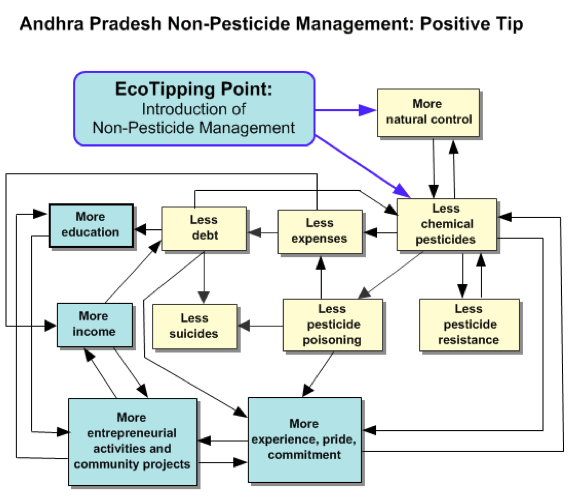
The Positive Tipping Point
It shows you what this 1 step “will do in your community”.
- Would you have expected that 1 step causes all this?
- When such a step is taken, do news media and city tell of all these positive effects in the community?
- Are they even aware of it?
Usually not. And that is why mayors and citizens hesitate to take action. They are not confident that taking action will cause relevant effects in the community, that it is worth “the investment”. That it is worth “the risk” to try something new.
Once you know, see and understand the many effects – and that these effects are common sense and achieved by ordinary citizens – you do not perceive “risk”. You perceive opportunity! And that it is easy.
then you do not want to stick to the miserable status quo. Because that would be stuuuuupid.
Then you want to have a better life. Then you want that step to be taken. Then you take action and you enjoy it. You enjoy all the way, step by step, because
- you understand the process
- you know this process takes a little time
- you know where it leads
- you are goal oriented
- you are confident you will achieve it
and this makes many members of the citizenry
- support it
- get involved
- come to hear and learn what (little step) they have to take
because putting up with misery would be stupid.
Once you get a choice between the current painful doom and gloom and to walk up a sunny hill along a marked path, you no longer choose to be lazy and stay idle in the rot.
The key to enable us to upgrade to Able + Active + Caring Citizens is to gain the VISION that CHANGEMAKERS have. And this vision includes OVERVIEW of what’s going on and going to happen.
This is what the GRAPHICS do!
Without the graphics
- you don’t understand
- you don’t see the bigger picture
- you cannot memorize it
- you cannot quickly inform, inspire and involve others
- you underperform
With the graphics
- you get it
- you feel inspired
- you feel competent
- you can inform, inspire others
- you have a big chance to perform well
The common problem is that people yearn to make changes but they are not ABLE. The ETP Graphic makes you an ABLE citizen.
The ETP graphic also serves as to-do list and roadmap
- to contact pertaining stakeholder groups
- to complete steps
- and to celebrate achievements!
So, let’s sum up what makes Gerry Marten’s and Regina Gregory’s ETP work so genius awesome:
1. (with care, determination and high standards) they find high impact model solutions all over Earth
2. (with a changemaker’s mind) they visit the successful community and ask *many people* deep questions to find out how it happened, how people like it, how they manage it
3. (with a changemaker’s + investigative photo journalist’s mind) they compose a multi-facted article with photos, interviews and explanatory text, with the aim to enable readers to turn into users; this article is like a MANUAL.
4. BONUS: They have also created teaching tools to use in the greatest multipler space of our society – SCHOOL – for our entire young generation of kids and teens to grow up with it. Perfecto.
Now you understand why we love Gerry and Regina. They truly do everything that’s needed for proper big positive change.
Next, view a graphic on the Negative Tipping Point, the introduction of poisons to cotton farming.
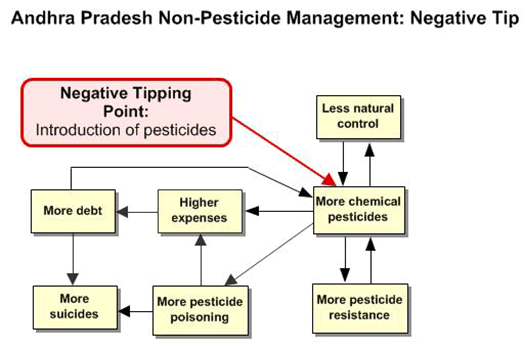
The Negative Tipping Point
The complete ETP analysis and toolset includes a Negative Tipping graphic to understand “what caused the problem”.
This is what you may find in common investigative journalism.
But note this:
- It does not tell you what to do
- It does not explain who to get involved, and who benefits
- It is charged with pain, frustration, anger
- It does not convey a feeling of motivation
- = it does evoke relevant action
We waste time when we do not include solutions, the path and immediate steps and tools for action.
Hint: observe our article composition, the feeling and – the Action Guides – and what this does to you when reading and doing this every day of your life.
THIS IS TRUE GENIUS. EINSTEIN STUFF.
It is simple, but all genius things *are* simple, once you get it. Because what gneius does is that it enables not a few of us but all of us to upgrade our operating system as next-level humans.
In YL, we call such adult changemakers MAGES, and teenage changemakers are HERO*INES. Is there a difference? Yes. While hero*ines do high impact direct actions, Mages’ solutions transform society. Like hero*ines’ actions, these magic wands are for everybody to wield. So, YOU are to become a mages’ apprentice.
These genius Magic Wands are for everybody to wield.
They have over 100 ETP stories.
Imagine the impact of copy-pasting them all to your country.
Now, you understand why Eric says “the solutions exist” + “people can do it” + “everybody must know” + “this has to be at all schools” + “it is every caring citizen’s responsibility and priority mission to spread this information + “to want it to get implemented”. #bemoreawesome
Keep reading. Learn magic. (Get a drink)
The “EcoTipping Points” Project brings to the world over a 100 success stories about the exemplary and successful approaches and global challenges addressing many communities and nations today. It’s installing hope and is the most empowering educational resource. Learn more here.
EcoTipping Points (ETP):
“EcoTipping Points are levers for restoring sustainability to our imperilled environment – small actions that tip the balance from decline to restoration by tapping the inborn power of nature and human societies to heal themselves.” Simply put, EcoTipping Point is the right change or a “single catalytic tip” that has been taken to rescue the depleted environment, impoverished communities, and address and overcome the social challenges successfully.
The phrase “tip point” was coined more than fifty years ago to indicate a threshold for dramatic change in neighbourhood demographics (Grodzins 1957). It was further used as “tipping point” by Wolf (1963) and Schelling (1978) to describe the same phenomena.
The ETP Project was started by Gerald Marten (fondly known as ‘Gerry’), an ecologist who wished to bring to the world the success stories that he learnt along the way. His mission is to spread the principles and the tips of ETPs.
We did an interview with him. Make sure to read it!
First, let’s take a look at a variety of positive tipping points since this is mighty encouraging and empowering.

How do ETPs work – Feedback loops – Vicious to Virtuous cycles:
Largely, ETPs transform/work on the basis of ‘feedback loops.’ To break out of ‘vicious cycle,’ the feedback loops (circular chains of cause and effects) need to be identified and reversal to the ‘virtuous cycle’ can be obtained by identifying strategic manoeuvres which can reverse the ecological destruction to ecological restoration, thereby driving positive change and sustainability.
Feedback loops: These are the key to the working of ETPs. They not only identify the cause and effect of the vicious cycle that is destroying society and ecosystems; they also depict the strategic points where the cycle can be reversed to restoration.
And restoration happens with the same force as decline had…
EXAMPLES of EcoTippingPoint ‘flagship stories’:
A marine sanctuary at Apo Island in the Philippines set in motion community fisheries management that reversed a vicious cycle of destructive fishing and depletion of fish stocks, restored the island’s coral-reef ecosystem and fishery, rescued a fishing village’s valued way of life, and created new avenues of prosperity. Seven hundred fishing villages in the Philippines now have marine sanctuaries.
Video: http://www.ecotippingpoints.org/video/apo-island/index.html
Negative Tip: Introduction and increase of destructive fishing methods by using dynamite, cyanide and small mesh fishing nets. This led to reduction in fish stock and degradation of coral reef habitat; leading fishing further away from the island thereby increasing risks.
Positive Tip: Creating a marine sanctuary aided in increasing fish stocks. This helped fishermen use less destructive methods and stay closer to home; and also marked a concern for the marine ecosystem and sustainability.
The pictures and graphics below show the factors for success and the way ETPs work.
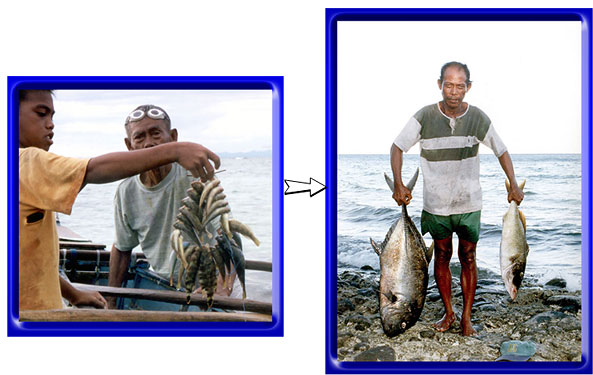
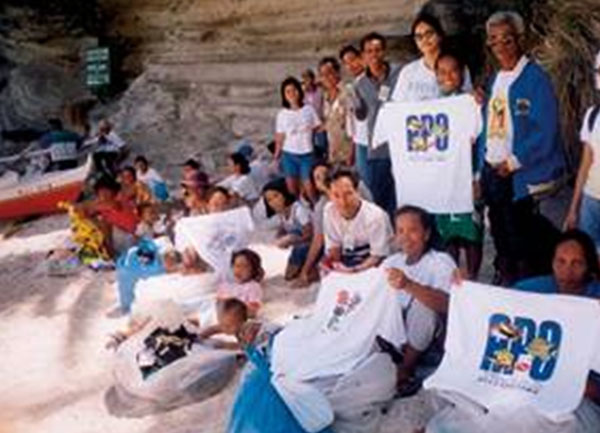

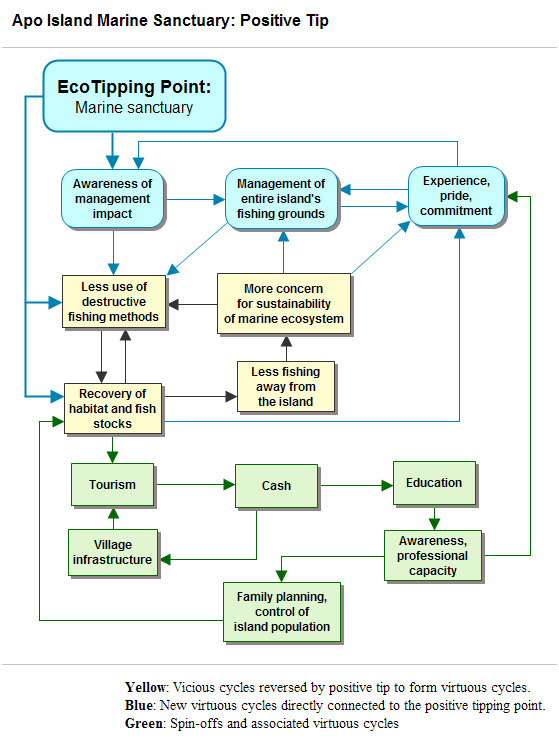
Payal asked Gerry about the 10 most important ETPs that each individual, community, city and country need to learn from. Here’s his list.
The example above, APO FISHERIES, and the first four in the list below are ETP’s “flagship stories”…
1
New York City’s “Green Guerillas” created community gardens in vacant lots
reversing a vicious cycle of urban decay, crime, neglect, and population flight while producing food, flowers, community space, and wildlife habitat to nourish the bodies and souls of 800 neighbourhoods, stimulating local residents to renovate the neighbourhoods and inspiring urban community gardening across the nation.
Video: http://ecotippingpoints.org/video/new-york/index.html
Negative Tip: Breweries and slaughterhouses, elevated railroads disturbing the populated streets, urban riots, landlords began abandoning or maintaining properties, reduction of government services due to less investment (less business income and taxes) towards vacant lots, and public systems such as police and fire stations, infrastructure and safety. All this led to the decline of the city ending up with garbage, rats, drug dealing and chop shops.
Positive Tip: Restoration through a community garden – efforts taken by a single person and her team “Green Guerillas” towards restoring the space by cleaning it, removal of garbage, cultivating food and flowers. Spread of a garden led to better infrastructure, safety, more gardens, residents flocking back to their properties, payment of revenues and taxes finally leading to a better life, better maintenance and services.

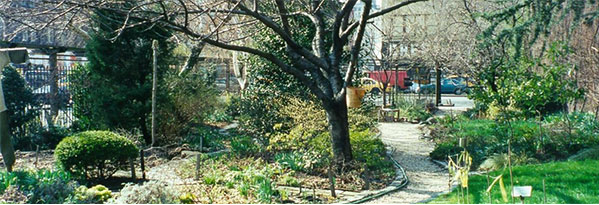
2
Agroforestry and community forest management in Nakhon Sawan (Thailand)
reversed a vicious cycle of deforestation, watershed degradation, dependence on expensive agricultural inputs, debt, population exodus, and carbon dioxide release due to deforesta (Tropical deforestation is responsible for 30 per cent of global carbon dioxide emissions). The region’s villages restored local forests and the ecological health of their watersheds, secured their livelihoods with agriculture that was sustainable because it mimicked forests, and helped to reduce global greenhouse gases by returning atmospheric carbon to a once-again verdant landscape.
Video: http://ecotippingpoints.org/video/thailand/index.html
Negative Tip: Expansion of markets for timber and cash crops leading to monoculture, less use of draft animals for manure, high use of chemicals, usage of multiple cropping. All this led to soil erosion, deforestation, less food for home consumption, water shortages and increased debt.
Positive Tip: Introduction of agro-forestry and community forest. Diversity of agro-forestry provided farmers more income, weeds to restore soil fertility, less fertilizers and pesticides, greater role of draft animals and less mechanization. Community forest aided in healthy watershed, flood prevention and availability of forest products for home consumption.
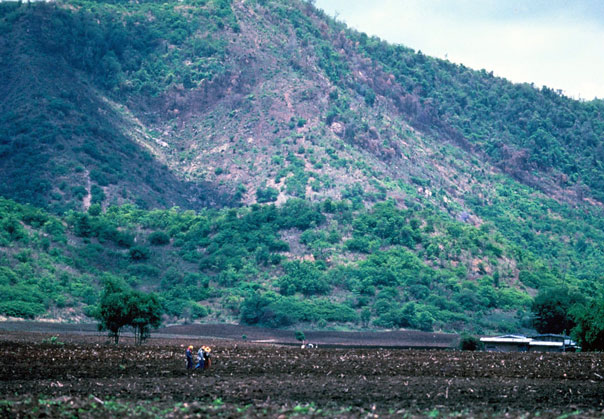
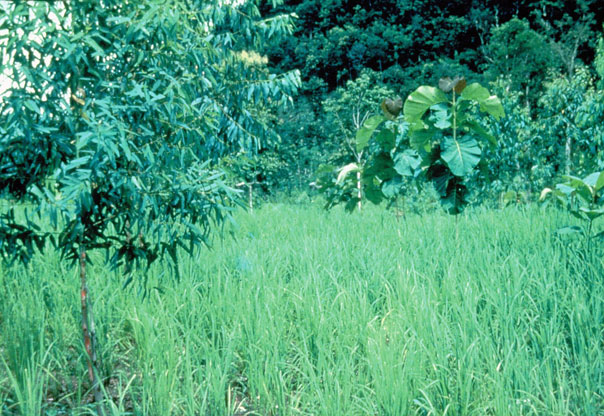
3
Cotton farmers in Andhra Pradesh (India) used “Non-Pesticide Management”
with neem and other ecological methods to reverse a vicious cycle of pesticide resistance in insect pests, heavier use of chemical pesticides, human pesticide poisoning, debt, and the highest suicide rate in India. They restored human health, family budgets, and local wildlife (including birds and predatory insects that provided natural pest control) and were inspired by their success to embark on new improvements for their village. Non-Pesticide Management has now spread to more than 3,000 villages.
Video: http://ecotippingpoints.org/video/india/index.html
Negative Tip: Introduction of pesticides for cotton farming proved fatal. Pesticides were initially introduced for killing insects, but pests developed resistance leading to a higher usage of pesticides. Birds that used to eat insects were also killed by higher usage of pesticides. This also led to pesticide poisoning and higher medical expenses for the farmer and further debts and suicide.
Positive Tip: Introduction of non-pesticide management by using neem and other ecological insect control methods. Birds and predatory insects returned to farm with lesser usage of chemicals. Farmers started becoming free of debt and medical expenses slowly turning things into profit. With this money, farmers leased more land and increased income, generated employment and helped hundreds of children return to schools along with other entrepreneurial activities and community projects.
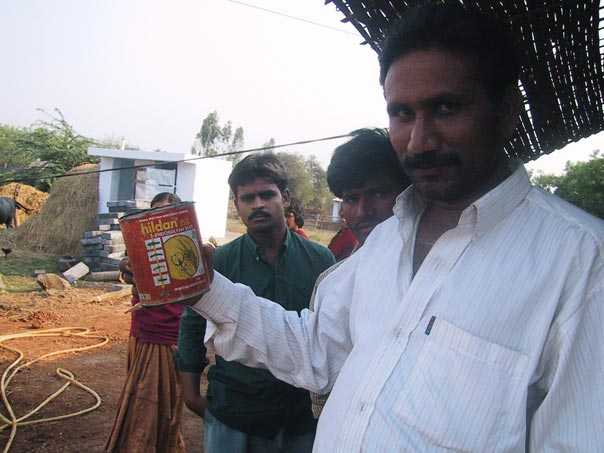
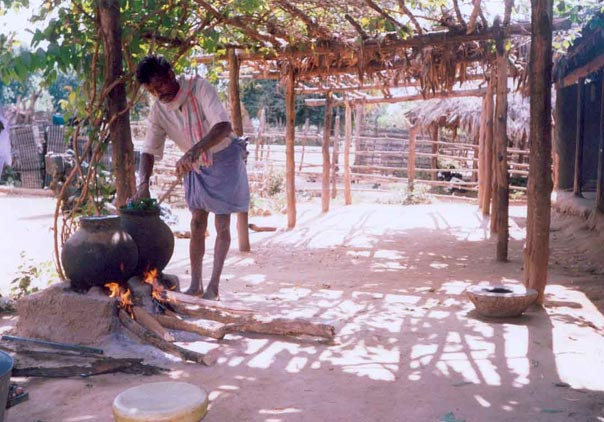
4
“Water Warriors” in Rajasthan (India) revived traditional rainwater catchment dams
in more than 800 villages, reversing a vicious cycle of depleted aquifers, dried-up wells and rivers, fuel wood depletion, agricultural decline, and population exodus while bringing back the water, original vegetation, wildlife, and a decent life for the people.
Video: http://ecotippingpoints.org/video/rajasthan/index.html
Negative Tip: Logging of forest reduced watershed from soil erosion. Sediment from rainfall increased in johad ponds reducing the channelling of water to aquifer. People started digging deeper and deeper into tube wells, reducing the water table significantly, along with reduction in irrigation water. Simultaneously, the johad ponds were left unattended as people moved to cities for better avenues.
Positive Tip: Restoration of a single johad in one village along with the beginning of a gram sabha to manage it. As the water returned to johad, villagers restored more johads which rose the water table, expanded irrigation agriculture facilities, thereby more vegetation and underground water. The villagers planted trees reducing soil erosion and more men came back to villages for jobs.
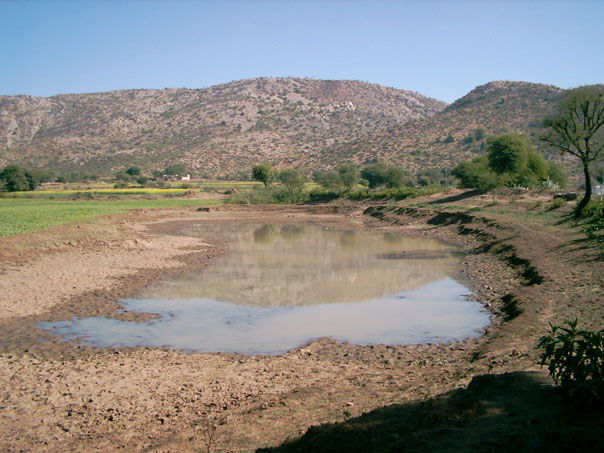
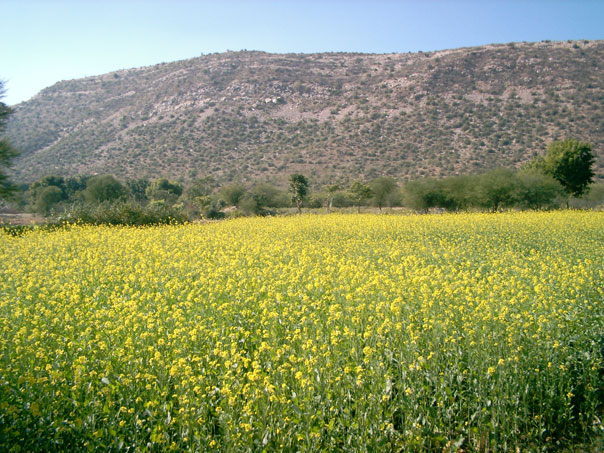
5
Community coastal mangrove management in Trang Province (Thailand)
reversed a vicious cycle of mangrove destruction, fisheries depletion, and the forcing of local inhabitants into increasingly destructive activities as resources deteriorate It restored mangrove habitat, coral reefs, coastal fisheries, and economic opportunities while inspiring more than 50 villages to improve the ecological health of their entire watersheds.
Negative Tip: Commercial aquaculture and charcoal production began cutting through coastal mangrove forests along with commercial trawling. Decline of estuaries led to decline of marine ecosystem leading to a decrease in fishes. Fishermen used hazardous ways of dynamite and poison to catch more fish. This led to deterioration of mangrove forests and fishermen moved towards working in charcoal production, trawlers and aquaculture. Medicinal plants and construction material for local consumption reduced.
Positive Tip: Establishment of a community mangrove management. Healthy estuaries improved marine ecosystems increasing fishing stock as fishermen used less destructive methods for catching fish. Local consumption increased as fishermen moved back to fishery and left charcoal production, aquaculture and trawling jobs. This further helped in recovering the estuaries.
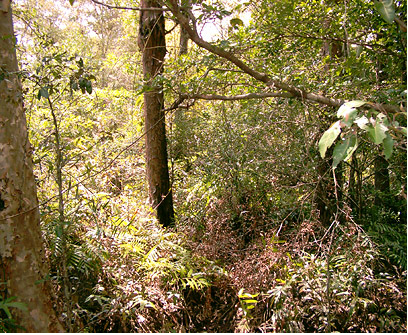
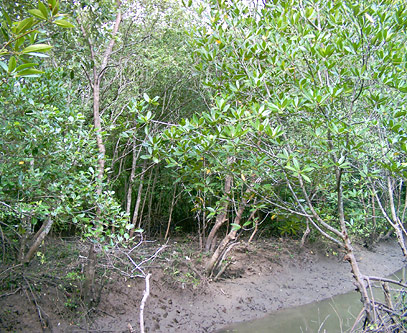
6
“Envision Utah” involved thousands of citizensinmap-based, regional planning workshops
creating an informed public opinion that reversed urban sprawl in the Salt Lake City metropolitan area, preserving agricultural land, transforming transportation corridors with light rail, and setting the 98 municipalities in the region on a course of healthier urban growth.
Negative Tip: An unprecedented growth in the city had started creating a chaos. Long commutes, farmland being taken over, congestion, nuisance ordinance against farmers (by local government), and no support was given for feed stores and an increasing population was putting pressure on families.
Positive Tip: A small professional staff was set up to fix the problem. Map based workshop processes involving thousands of citizens were conducted. Implementing strategies led to reduced local energy consumption and infrastructure costs, a plan on how to save the farmland along with filling the extra people coming in and the construction of an initial light rail line was the main tipping point with lines being now added every year.
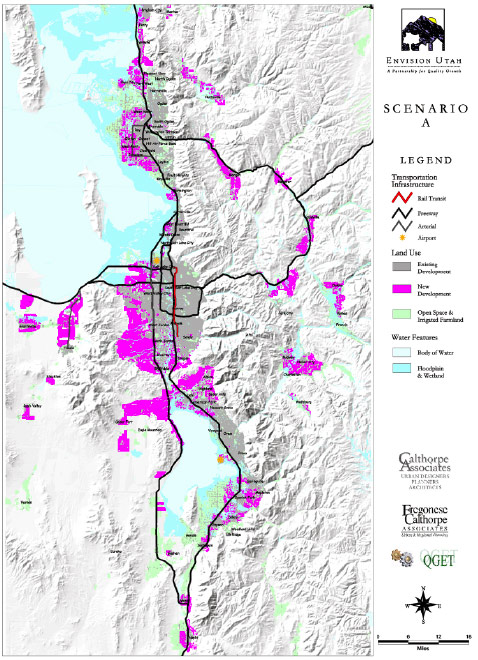
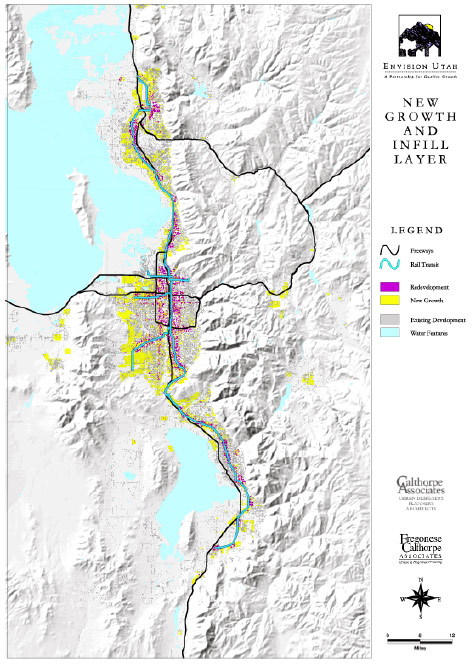
7
Arcata (California) created a coastal wetland
at the former site of the city’s dump and derelict millpond, providing low-cost municipal sewage processing along with wildlife habitat and nature recreation in an urban setting. Expansion of constructed wetlands to surrounding towns changed urban development in away that helped to contain urban sprawl.
Negative Tip: Arcata’s wastewater treatment plant was not treating wastewater adequately. A new sewer pipeline would lead to the bay making the pollution worse. This would create expansion in infrastructure of malls and housing societies. Aracata had recently saved its agricultural land and adjoining forests turning into community parks. The plant and pipeline would also be costly.
Positive Tip: Creation of a wetland which led to purifying water, promoting wildlife habitation and treating municipal sewage and wastewater. 30-40 acres of unused wetland or industrial brown fields were developed into marshes by cutting concrete. Marsh plants were allowed to grow naturally and vegetation was added to some marshes. Marshes are now used for scientific study, recreation and birding and excursions and it supports 100 species of plants, 6 species of fish and many birds and mammal species.
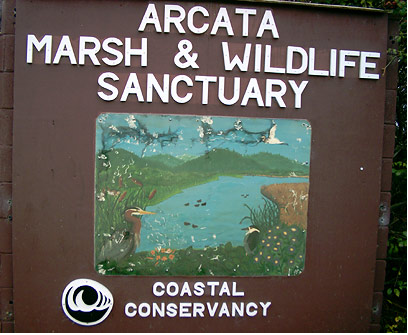
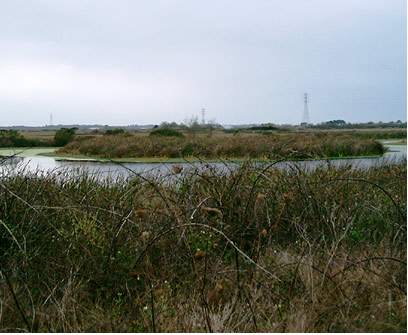
8
Indigenous communities in the Mixtec region of southern Mexico planted millions of trees
reversing a centuries-long vicious cycle of deforestation, overgrazing, and desertification, setting a barren landscape on a course of restoration, and inspiring the communities to take greater charge of their destinie
Negative Tip: Bad land use practices led to desertification, converted forests into wastelands, over grazing by animals prevented recovery of forests. Cultivating monoculture cash crops led to heavy soil erosion and increasing use of fertilizers made Mixtec one of highest eroded lands on the planet.
Positive Tip: Guatemalan refugees had taken shelter in this region with the help of an American NGO. Seeing the plight of this region, they began sharing their soil conservation, sustainable agriculture and planting of beans in a row (rather than random) with the farmers aided by Mexican NGO CETAMEX. Soon more farmers and other communities chipped in. Green manures were used, seeds were selected to improve varieties of corn and marketed as an organic crop. Reforestation began, plant resistance with regards to storage, drought and pests increased, and productivity increased leading to better nutrition and health with the setting up of farmers’ own organization CEDICAM.
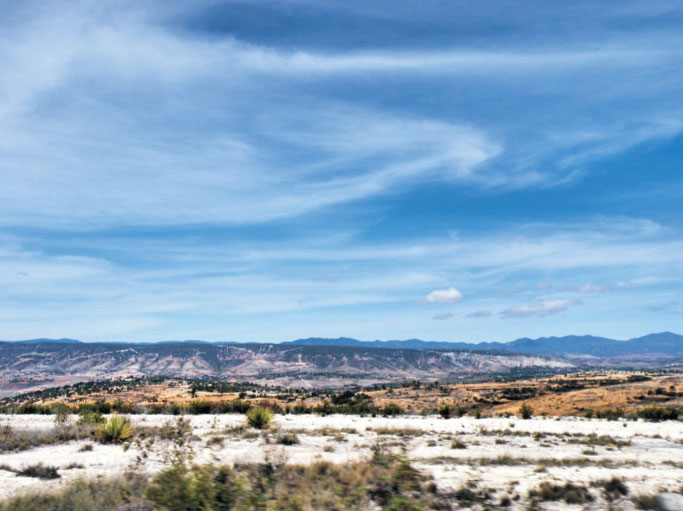
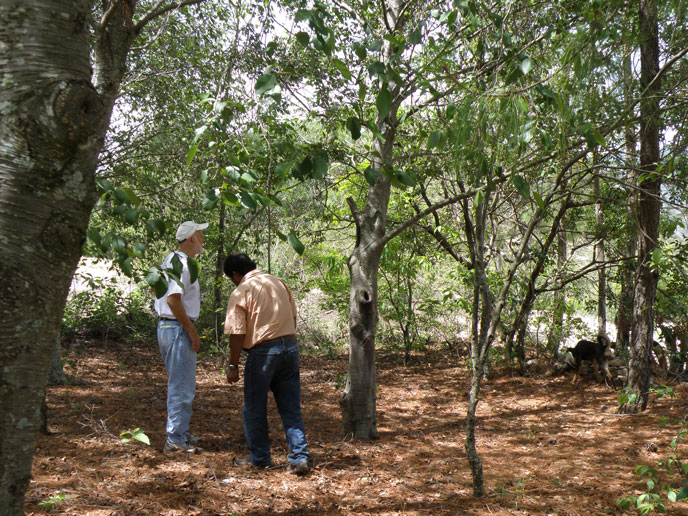
9
Freiburg, Germany is an inspirational “greencity”
which overcame a vicious cycle of ever-increasing consumption and dependence on fossil fuels, switching to a course of sustainable transportation, energy, waste management, and land conservation while creating a far-reaching green economy that perpetuate seven more environmental progress.
Negative Tip: World wars, increasing population and an industrial revolution led to increasing usage of fossil fuels and nuclear power. This led to environmental pollution and mass consumption of goods with an uneven economic growth and unreliable jobs.
Positive Tip: Awareness amongst the residents and government of this unsustainable economy led to the ‘Green revolution.’ Emphasis was laid on recycling, transportation in terms of cycle and bike paths. Energy saving methods, efficient technology and resource conservation methods were stressed upon rather than wastage. This led to creation of more jobs and promotion of land conservation and renewable energy sources.
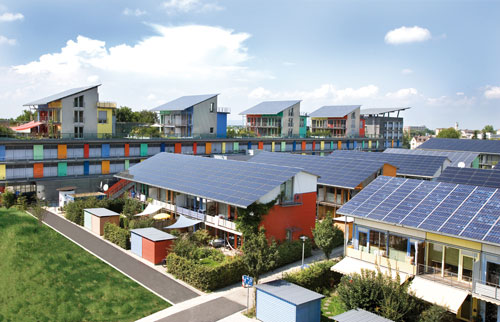
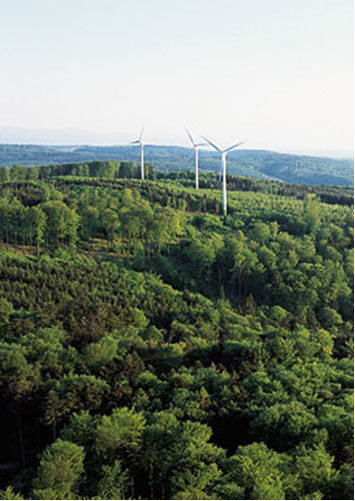
Ingredients for success:
Ingredients for success are factors that make the ETPs a success story – its key characteristics of eco-technology and the role of the lever which sets in motion a cascade of changes.
1. Outside stimulation and facilitation: Not just the local communities, but people from outside the communities should come forward to discuss the problem and fresh ways, programs and approaches to deal with it and stimulate actions required to overcome the disordered situation that has been created over time.
2. Strong local institutions and enduring commitment of local leadership: Community needs to participate in the development programs towards achieving their one goal by utilizing their own manpower and resources.
3. Co-adaption between social system and ecosystem: Social system and ecosystem fit together, functioning as a sustainable whole (Marten 2001). To augment the sustainability of man and environment, all need to function as one with shared interests.
4. Letting nature do the work: Many a times, ETPs themselves set the nature to work in the reversal motion and restore the perishing environment.
5. Transforming waste into resources: As it’s known – Waste is not wasted. Land, buildings, garbage which is considered ‘waste’ can be converted to a valued social or physical item.
6. Rapid results: Quick results in the form of ‘paybacks’ or benefits can pull the social, economic and political processes towards it for greater and better value additions.
7. A powerful symbol: Sometimes, a leader needs to stand up and support a cause which can energise and motivate the community to take action for everyone’s well-being.
8. Coping with social complexity: Many times, people themselves are an obstacle to growth. Either they do not participate in community development, or outsiders take advantage of improving situations, or dependencies stop the way to growth. Individuals and communities need to overcome this tendency.
9. Social and ecological diversity: Diversity provides better choices in decision making. Social and ecological diversity too enhances the restoration process.
10. Social and ecological memory: Learning, knowledge and technology of the past is of value even today. Similarly, ecological memory creates flexibility and better interrelationships in living organisms in their ecosystems.
11. Building resilience: Resilience helps in working against unexpected and disturbing forces. ETPs work in conditions which can withstand threats, and communities can adapt to change by testing and learning from mistakes and successes.
You too can create your own ETPs. Here’s how….
1. The feedback loops can be discussed and processes can be decided to bring about the cause and effect for social and environmental problems.
2. Identify the negative tips.
3. Chalk out the positive points (or interventions) that need to be drawn out which will reverse the momentum to virtuous cycles and build their own pace to positive reversal.
4. Finally, build the ‘ingredients for success.’
Also interested in knowing more about such amazing stories?
Check them out at: www.ecotippingpoints.org/our-stories.html
ETPs for Teachers:
K-6: ETPs mini books constitute of a set of five stories set in three different countries encompassing the cases of water pollution, acid rain, soil erosion, fish depletion and water supplies. The stories are addressed using vocabulary, questions and graphical explanations. A power point presentation is also available which focuses on environmental education through an individual’s commitment with transformation and sustainability.
K7-12: There are several types of offerings for students and teachers of science, social science, environmental studies and English –
How success works: 5 environmental case studies are discussed along with their ingredients for success. Videos, power point presentations, vocabulary, assessment tools, identification of ingredients for success and read along cases are provided for students.
Environmental Conference on Sustainability in Action: A jigsaw format is used to teach students the environmental problems and how they have been overcome by communities towards sustainability. Students can prepare their cases for conferences using human geography terms and questions.
Feedback diagrams for teaching ETPs: Students learn how to diagram feedback loops and how ‘levers’ work. Henceforth, the students can apply this to their own communities.
Changing Nature’s Course: A look at ETP models: Students understand how human activity has disabled ecosystems. Then using the ETP model, they learn what situations and events reversed the process. Students can undertake this using graphical activity, debates, role-playing, tumbling block situations and essays.
Town hall Meeting: Role-playing and simulation teaches children about environmental crisis and their own critical thinking and problem-solving skills on the various ways to deal with it. Finally they are explained the actual procedures taken for restoration.
Learning to play by nature’s rules: Students learn to recognize vicious to virtuous cycles and the different measures (mainly regarding approaches to water) taken to improve the situation.
Something Fishy: Students learn about fish biology, ocean ecosystems, and human-ecosystem interaction. They learn how marine life survives despite changes.
Resources we live by: Students can create geography vocabulary books about natural resources used in making or breaking communities.
ETP Mini books: Similar to K-6 level offering.
To Diaper or not: Using diapers as an example students learn the importance of creating simple and effective methods of waste disposal; including discussing issues about the disposal, and biological hazards/ benefits of industrial waste to the environment.
An introduction to Environmental ED: Similar to K-6 offering.
College level: There are two types of offerings here:
How success works: Similar to that of K 7-12.
Feedback diagrams for Teaching Eco-Tipping Points: Students can learn how to make feedback loops based on the case studies. They also learn how “levers” work – the small actions that create the big change from the vicious to virtuous cycle.
School wide Projects: Cross-curriculum projects can be undertaken to teach children the concept of sustainability.
Edible School Yard: Students can grow a variety of crops, finally offering the harvest at their café. They can then use the scrap compost for recycling to the garden itself.
Habitat-Based Learning Center: Download a power point presentation showcasing diverse biomes that can be used for environmental study.
Check out the link below for more details:
http://www.ecotippingpoints.org/for-teachers.html#schoolwide
Wish to know more? Check out..
http://www.ecotippingpoints.org/resources.html
Eco Tipping Points project wishes to disseminate information related to social and environmental concern. It wishes to provide information on basic principles, real applications and how they can be applied. They also wish to collaborate with people who would like to develop toolkit and/or apply ETP in their own community/schools etc.
For more information, contact:
Gerry Marten: gerry@ecotippingpoints.org
For teaching lessons, sharing more stories or needing speakers for your events:
Mail at: ecotippingpoints@gmail.com
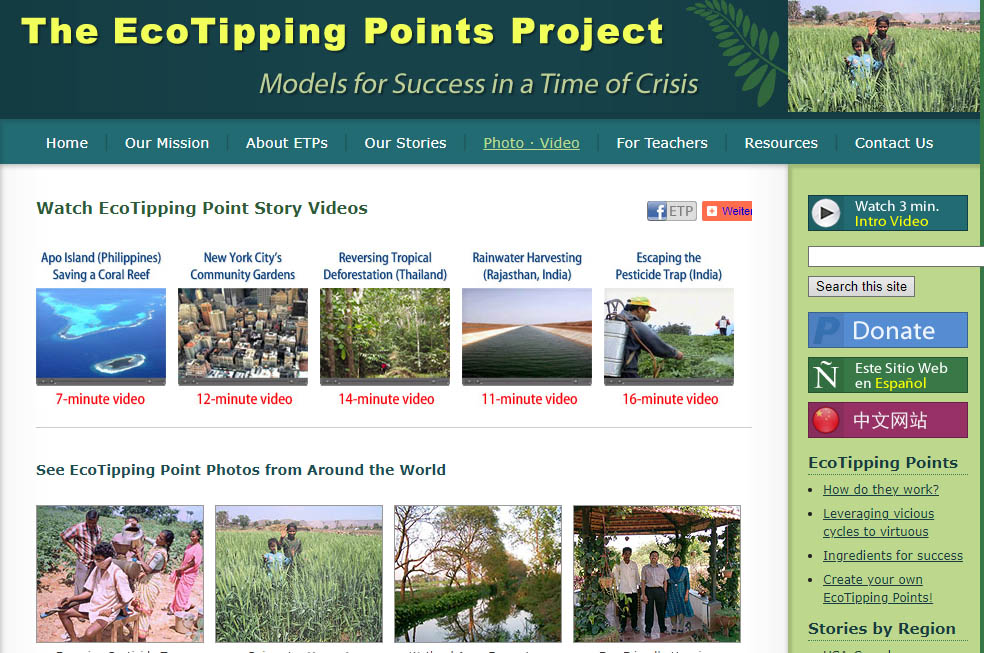


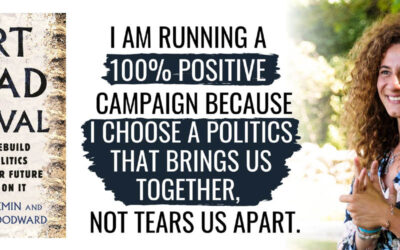
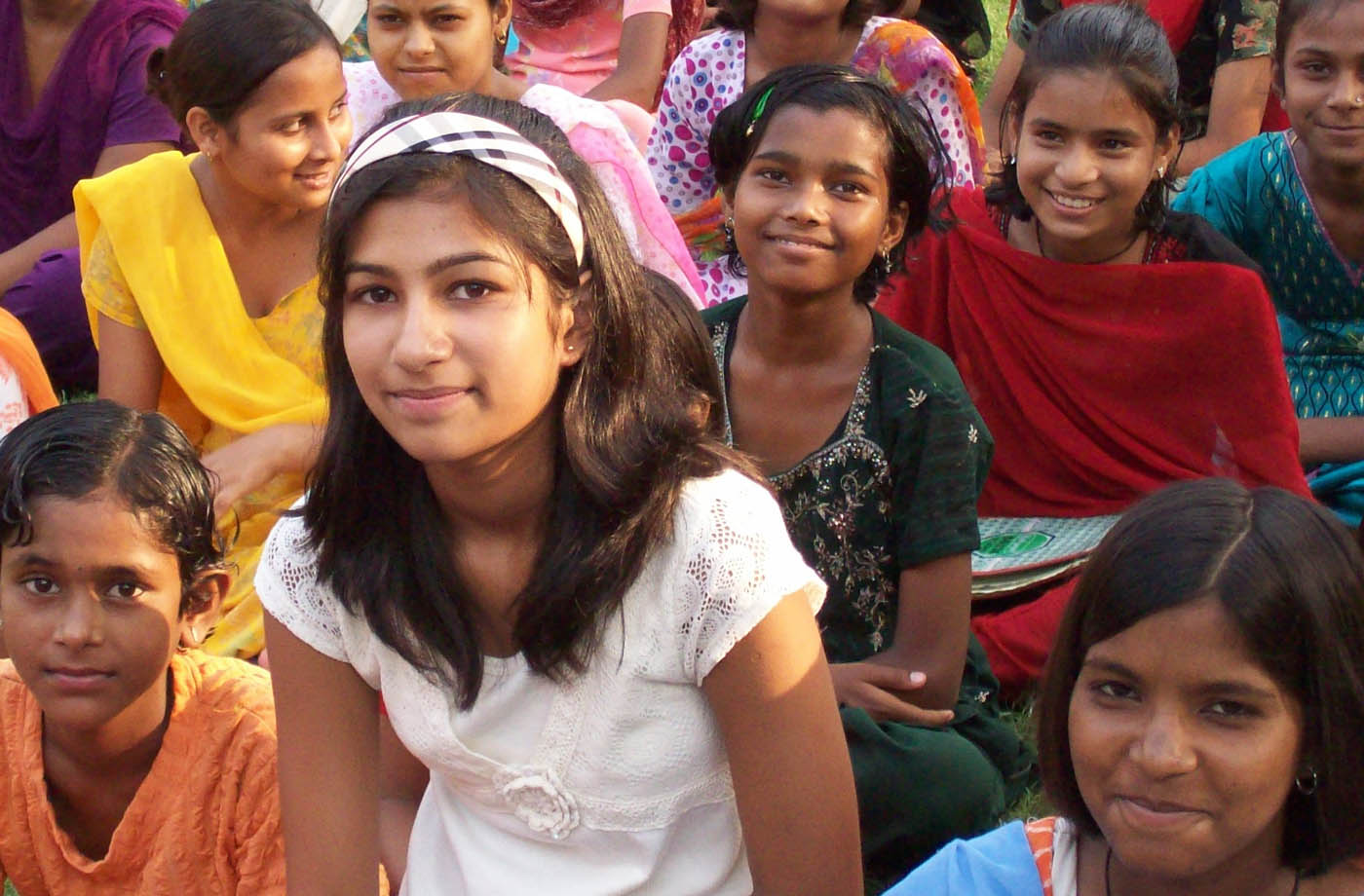

0 Comments